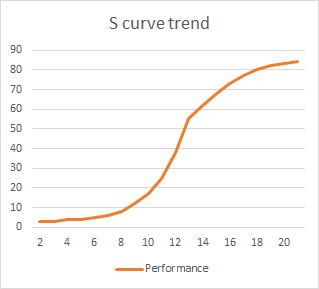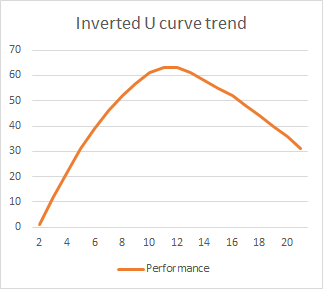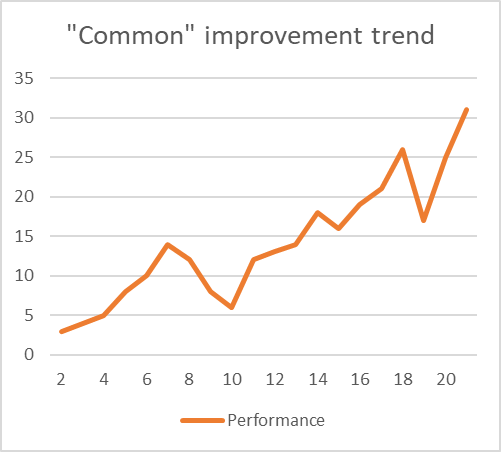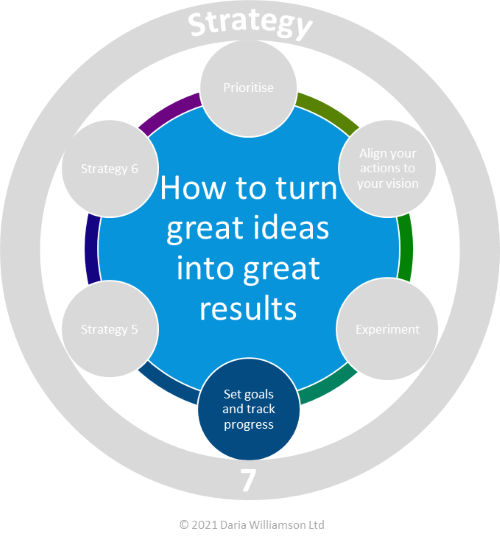This article addresses one of the most important aspects of any change process – to set goals and track progress.
Change programmes always face challenges. Two of the most common are having doubters in the group, and not yet knowing the ideal solution(s).
When we kick off a change programme, or even a single experiment, it’s pretty uncommon to have unanimous support. There will always be a doubter or two amongst the group, which is not a bad thing.
And just because we were able to identify a problem doesn’t guarantee that we’ll figure out the best solution on our first try.
When we set goals and track progress, we start building credibility and momentum to win over the doubters. And we have a way of ensuring that we’re making a positive difference with our efforts.
The inherent value of doubters
It’s tempting to think of someone opposing change as unreasonable, out-of-touch, and part of the problem. And occasionally that’s actually true.
But usually, doubters simply have a different perspective. They want to see evidence. And they can help you to make excellent change. How?
They encourage critical thinking
Doubters will help you think carefully about your assumptions, the proposed change, and your predicted results.
If you know you’ll have to justify your claims, you’ll take time to ensure that you’ve got evidence to hand.
When they're convinced, they're all in
They won’t jump on the bandwagon just because everyone else doess, but once they believe in what you’re doing, they’re all in.
That boosts momentum and engagement, because it reinforces the validity of what you’re doing. And, in my experience, doubters can become some of your most vocal supporters.

Why "any old change" isn't good enough
Our desire for change is often driven by frustration with how way things are. We’re annoyed by the issues, errors, mistakes, problems and barriers we encounter in our daily work. And we think we know exactly what’s needed. If you’ve ever heard yourself say “I wish so-and-so would just…”, then you know what I mean! But just because we think we’ve identified a problem doesn’t mean that we automatically know how to resolve it.
And there’s a real temptation to set goals for improvement based on our perceptions, rather than what is actually happening.
We need to know what the real problem is (the “root cause”) before we set about fixing it.
Before you set goals, define the problem
If I had an hour to solve a problem I'd spend 55 minutes thinking about the problem and 5 minutes thinking about solutions
Unknown (usually attributed to Albert Einstein) Tweet
There are worse things we could do than follow the advice usually attributed to Einstein. Being really clear about exactly what’s going on is a great place to start when we’re solving problems. And it will help us clarify what difference we expect our changes to make.
I’ll be writing more about problem definition in the future, but as a starting point, I recommend the “5W1H’ framework. Ask yourself:
- What is and is not happening
- Where it is and is not happening
- When it is and is not happening
- With whom it is and is not happening
- Why it is and is not happening
- How it is and is not happening
- The consequences of this happening/not happening (get actual data here – customer numbers, profits, failure rates, complaint numbers and types etc. This data feeds into the KPIs that form your “baseline”.)

Establish the baseline from which you'll set goals for improvement
Once we know what the problem actually is, we can start thinking about our goals. I’m assuming you already track Key Performance Indicators (KPIs). If not, I recommend the PriceWaterhouseCoopers guide that I’ve linked to in the Resources section as a starting point.
Some questions to shape your goals:
- Which KPIs will be affected by the proposed change(s)?
- In what direction will the KPIs change?
- By how much will they change?
- How soon will these changes start to have an impact on KPIs?
- By when will the full impact of the changes be evident?
- What other areas of performance should we be measuring?
Set goals that are clear
If you set an ambiguous goal such as “improve sales”, how will you know whether you succeeded? Consider these scenarios:
- Sales transactions go down, and your average sale value goes up. Your profit stays steady.
- Both sales transactions and average sale value go down, but you’re selling more products with high margin. Your overall profits stay the same.
- Sales transactions and average sale values rise, but you’re selling more products with low margin. Your profits fall.
Do any of these scenarios meet your “improve sales” goal?
Set goals that are specific and concise
The more specific, clear and concise your goals are, the easier it is to tell if you are on-track to achieve them.
I recommend the format:
HOW MUCH and WHAT you want/expect, and by WHEN you want/expect it to happen
For example: A 10% increase in sales transactions by 31st March 2022
With a specific goal like this, you can track sales on a regular basis to see if you’re on-track to achieve your goal. And, on 1st April 2022, you can easily tell if you met, exceeded or fell short of your goal.
Set "anti-goals"
I also recommend setting “anti-goals” – that is, outcomes that you don’t to occur. Why? Because by thinking about possible unintended consequences, you can design your change to reduce the chance of them occurring. And you’ll be sensitive to subtle signals that indicate the negative consequences are starting, before they balloon up into real problems.
Use two simple questions to shape your anti-goals:
- What undesirable changes could occur?
- What measurements would tell us if undesirable change is occurring?
Make these as much of your progress tracking as the desirable measures. Why? Because making things better isn’t just about improving in desirable areas, it’s about taking smart action to ensure that undesirable changes are mitigated or eliminated.
Let the experimentation begin!
Now that you know what you’re looking for, what you want to avoid, and how to measure your progress, it’s time to get your change underway.
In my earlier article about experimentation, I talked about how we’re great at experimenting as kids, but get out of the habit as adults. Getting great results isn’t about making a permanent change than can never be reversed. Read that article to learn about how you can start your journey to great results with a “small bet”.
Tracking progress - your health check and early warning system
It is impossible to overstate how important it is to track progress towards your goal. Otherwise, how will you know when to celebrate success, or pull the pin on something that isn’t working?
After setting specific goals, collect data at an appropriate frequency to measure your progress. This could mean hourly, daily, weekly or even monthly data. Then, analyse this data and check it against your baseline and goals.
If you’re on-track, you can decide to maintain your current performance, or seek to improve further.
If your performance is off-track, trend the data to see what’s happening over time. But a word to the wise – you will need to be patient, and monitor progress for long enough that trends are clear before you decide whether intervention is required.
Analysing performance trends
The S curve
Some changes start slowly then accelerate quickly. This is illustrated in the “S” curve graph.
This isn’t necessarily a bad thing, but rather an illustration that the change you made has reached its limit of growth. If you’re happy with the performance at the top of the S, then there’s nothing else you need to do. If you aren’t happy, then you need to look for ways to remove the limits to growth.

The inverted U curve
Some changes start with a hiss and a roar, then fall away (an inverted “U”).
This can happen when people initially get behind the change, but over time, they go back to the old ways. This can suggest that a system is pushing back against the change, or that people’s deep-seated beliefs aren’t in line with the change. Look for ways to shift the system, or adjust the change to more closely align with beliefs (adjusting the change is much easier than trying to shift someone’s beliefs!)

The lumpy graph - the most common pathway to improvement
For most changes, the improvement in performance will be lumpy. You’ll make some gains, then they’ll drop back, followed by more improvement. This is illustrated in the “common” improvement trend graph.
It can feel discouraging when the performance line turns downwards, and this is why we need to measure progress over sufficient time. We can then distinguish between “signal” (actual underlying shifts) and “noise” (temporary or short-term fluctuations that are a natural part of any system).

In the example graph, the signal is an overall positive effect (the line is trending upwards). The noise comes from the moment-to-moment fluctuations in performance – sometimes up, sometimes down.
Ideally, over time, the noise will reduce so there will be fewer ups and downs. If it doesn’t, check that your data is accurate and timely, then consider addressing the process variations, starting with plotting a statistical process control chart.
Make it visual
Change efforts often fail because the people who are undertaking the change simply don’t know the impact of what they are doing. There’s a reason that most competitive sports prominently display scoreboards during the game!
Set up a “visual management” board somewhere central, where your stakeholders can see it. Post your goals and regularly-updated performance measurements on the board. Have meetings in front of the board to discuss what’s going well, what’s not working, and what to do about it. It’s amazing what a little transparency can do to boost people’s engagement, participation and support.
When it's time to adjust your goals
Sometimes we discover that we haven’t set realistic or achievable goals. It happens. Especially when we’re working with innovations and new ways of doing things.
If you find yourself in that situation, take stock. What has your performance trend been so far? How big is the gap between current state and your goal? What can you do to close the gap?
There are a range of ways to adjust your goal. It might be something as simple as breaking it down into mini-goals, or shifting the timeline. Or it might be as drastic as scrapping the goal altogether, and choosing a different goal.
Whatever adjustment you think you need to make, communicate with your stakeholders early, and often, and incorporate their feedback into your process. You’re more likely to achieve your goal if you get everyone on board.
Progress check
This article is part of the series, ‘How to turn great ideas into great results’. The strategy articles so far are:
- Prioritise
- Align your actions with your vision
- Experiment
- Set goals and track progress (this article)

Stay tuned for the next article covering the next strategy for turning your great ideas into great results. You can keep an eye on the series page for new articles, or sign up to my weekly newsletter below to be the first in the know when a new article is published.
If you’d like to learn more about generating ideas, check out the companion to this series, ‘How to have great ideas‘. It has ten science-backed strategies to help you generate great ideas.
Get your own great results
I help people to identify their strengths and capabilites, and use them to achieve their goals and dreams.
If you want to turn your great ideas into great results, I would love to help. I offer complimentary discovery calls – book yours on my Bookings page, send a message via my Contact page, or email me.
Resources
- Guide to Key Performance Indicators – PriceWaterhouseCoopers (PwC) [link opens a PDF document]
- Control Chart – American Society for Quality
- 5W1H Method: Concepts, Applications & Tips – edrawsoft.com
- I Would Spend 55 Minutes Defining the Problem and then Five Minutes Solving It – QuoteInvestigator.com




4 thoughts on “Great results: Strategy 4 – set goals and track progress”
Pingback: How to turn great ideas into great results: Strategy 3 – experiment ~ Daria Williamson
Pingback: How to turn great ideas into great results: Strategy 5 – involve others ~2021 ~ Daria Williamson
Pingback: How to turn great ideas into great results: Strategy 6 – get a coach ~2021 ~ Daria Williamson
Pingback: How to turn great ideas into great results: Strategy 7 – use your strengths ~ Daria Williamson
Comments are closed.